Upgrading from Phase One IQ1/2/3 to IQ4, a Quick Start Primer
IQ4 Upgrade | Quick Start Primer
As one of the expert (cough, ahem!), Phase One dealers in the world, Capture Integration has a wealth of resources to share with our clients who purchase from us. Deep dives into key features or techniques. Detailed examinations of excellent tools, and informed alerts about things that aren’t ready for prime time. Tips on best practices.
Throughout our history with Phase One, we’ve seen digital backs go from having no interface at all (because there was no LCD screen!) with tethered only digital backs like the H25 (from 2002), to a fairly crude but logical menu-driven interface with push button control (P/P+ series, beginning 2004), to touch screen interfaces (beginning in 2011 with the IQ1 series).
And today we have the IQ4 150, which takes the original touch screen from the IQ1/2/3 series and brings it even more into the modern era. I have a bit of a pet peeve with camera companies that began their interfaces in one way, and then just never ever evolved, but instead just added on. And added on. And added on. To Phase One’s credit, they have evolved their user interface and not been satisfied with recycling the same 1998 user interface that so many camera companies just can’t seem to let go of.
Swiping Swiping Swiping
While the user interface of the IQ4 is similar to the previous IQ1/2/3 versions, there are some important differences, and knowing them right out of the box will be a big help in acclimating yourself to the changes. The biggest change is that many tools which previously required multiple taps to dive through the menu layers to access are now a swipe away. Below are some of the swipe screens with available tools. Importantly, any screen you are in has swipe options, so get used to swiping! The nice thing about swiping is that it’s an easy action to make physically, but also, it is very fast, a swipe and then the tools you want are right there. Another swipe and they’re back where they belong. So let’s dig in:
Home Screen
The IQ4 Home Screen replicates the top screen interface of the XF camera body it is attached to, unless you’re mounted to the XC or XT cameras, in which case the screen remains very similar with options for adjusting exposure and other pertinent details. From this Home Screen, swiping down reveals system status information – battery life, tether connection, wifi connection, etc. Swiping up reveals all the other locations you can go to, including the main menu, accessed via the 3 line burger menu symbol. These vertical swipes are the only screens that remain constant no matter what screen you are in when you access them.
Swipe left to right and you have a Spirit Level tool. Swipe right to left and you have access to the LAB features (not to be confused with CIELAB color space) 😉. These are like, in the lab where experiments occur … Currently sitting there are Auto Frame Averaging, Dual Exposure Plus, and ETTR tools.
Playback Screen
Once you navigate to the Playback Screen, swiping left to right pulls out a trash/rating tool and a white balance tool. Swiping right to left brings out a toolset that includes Histogram, Info, Warnings, Spirit Levels and more. The order of the tools can be customized. And if you see a tiny corner triangle, this means you can press and hold for configuring the tools the exact way you want them.
Browser Screen
Once you navigate to the Browser Screen, swiping left to right pulls out just the trash tool. Swiping right to left brings out a toolset that only includes Capture Info and Warnings. Again, if you see a tiny corner triangle, this means you can press and hold for configuring the tools the exact way you want them.
Live View Screen
Once you navigate to the Live View Screen, swiping left to right pulls out a white balance tool and the toggle for Live View Auto Gain or Exposure Simulation. Swiping right to left brings out a toolset that includes Histogram, Info, Focus Peaking, Grid, and Spirit Level. Once again, the order of the tools can be customized. And if you see a tiny corner triangle, this means you can press and hold for configuring the tools the exact way you want them. Notice that the Auto Frame Averaging tool has made its way into the Live View Screen.
Final Word
We’re big on user interfaces, and enhanced user experience in general. While the interface of the Phase One IQ series is not perfect, they were one of the early adoptees of touch screens, and a move away from the standard 1998 style of never ending menus and sub menus. They continued to evolve the interface by adding fast, quick access swipe screens to the IQ4 series. If you’re not up on swiping, dive in!
By Steve Hendrix
Thanks for reading! If you have any questions feel free to reach out!
Steve Hendrix
steve@captureintegration.com – 404.543.8475
Discover more from Capture Integration
Subscribe to get the latest posts sent to your email.
